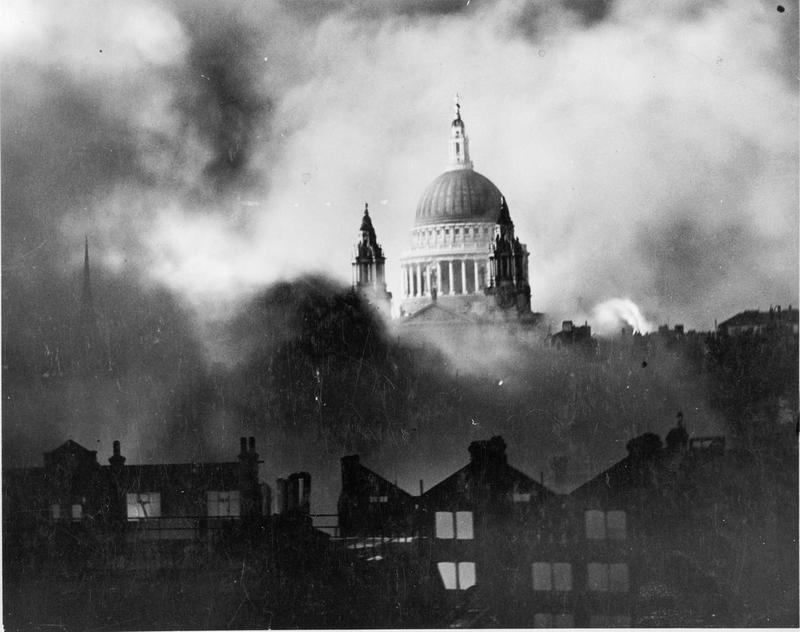The 1954 hague Convention for the Protection of cultural heritage in the event of armed conflict
The 1954 Hague Convention for the Protection of Cultural Property in the Event of Armed Conflict was drawn up after the widespread devastation of cultural property in World War II. Together with its two Protocols of 1954 and 1999, it is the most widely recognised international treaty exclusively dedicated to the protection of cultural heritage in armed conflict. The Convention and its Protocols oblige States Parties to take measures to Safeguard and Respect cultural property, preparing proactively in peace in case of armed conflict. This includes putting in place protective measures for important cultural heritage in peacetime, creating a specialist unit in the armed forces, and carrying out training (separately and together) for military and heritage professionals, as well as training armed forces in standards for protecting cultural property during conflict.
The Convention was signed in the UK in 1954, and ratified along with both Protocols in 2017, when it was implemented into UK law via the Cultural Property (Armed Conflicts Act 2017. However, culture is a devolved responsibility in the UK. Scotland, Northern Ireland, and the UK Government released two Policy Papers detailing the UKs implementation policy and providing guidance (which are essentially the same amongst all authorities):
The Convention was signed in the UK in 1954, and ratified along with both Protocols in 2017, when it was implemented into UK law via the Cultural Property (Armed Conflicts Act 2017. However, culture is a devolved responsibility in the UK. Scotland, Northern Ireland, and the UK Government released two Policy Papers detailing the UKs implementation policy and providing guidance (which are essentially the same amongst all authorities):
|
1) Implementation of the 1954 Hague Convention for the Protection of Cultural Property in the Event of Armed Conflict, its Protocols and the Cultural Property (Armed Conflicts) Act 2017
2) Guidance on the Cultural Property (Armed Conflicts) Act 2017, including dealing in unlawfully exported cultural property |
Article 1 - definition of cultural property
Article 1 of the Convention provides a (non-exhaustive) definition of the types of cultural property that are eligible for protection under the Convention provided that they are “of great importance to the cultural heritage of every people“.
For the purposes of the present Convention, the term `cultural property’ shall cover, irrespective of origin or ownership:
(a) movable or immovable property of great importance to the cultural heritage of every people, such as monuments of architecture, art or history, whether religious or secular; archaeological sites; groups of buildings which, as a whole, are of historical or artistic interest; works of art; manuscripts, books and other objects of artistic, historical or archaeological interest; as well as scientific collections and important collections of books or archives or of reproductions of the property defined above;
(b) buildings whose main and effective purpose is to preserve or exhibit the movable cultural property defined in sub-paragraph (a) such as museums, large libraries and depositories of archives, and refuges intended to shelter, in the event of armed conflict, the movable cultural property defined in sub-paragraph (a);
(c) centers containing a large amount of cultural property as defined in sub-paragraphs (a) and (b), to be known as `centers containing monuments’.
UK government has published a shortlist (which is "indicative and non-exhaustive and is published for guidance only. Inclusion in the list is not a prerequisite for protection by the Convention and its Protocols. Any cultural property which meets the definition set out in the Convention is protected, whether or not it is included in the list".)
The government considers that cultural property in the following categories meets the definition set out in Article 1 of the Convention and is therefore protected by the Convention and Protocols. |
Air Raid damage, World War Two. During the Blitz, the UK government decided that St Paul's Cathedral was so important that they pulled back fire services from other parts of London to save the cathedral.
Herbert Mason via Wikimedia Commons, Public Domain. |
Safeguarding
|
The UK government has elected not to use blue shields: this photos was taken in 2016 (before ratification) outside DCMS. Why is it there? Do you know?
© P Stone. |
States parties who have signed the Convention and both Protocols should:
|
.The blue shield emblem is a protective symbol used during armed conflicts and its use is restricted by law. Blue shield in Bydoszcz, Poland, 2020 © E Cunliffe.
|
The Convention also has measures to be carried out by Defence in peacetime which include:
- Creation of a specialist unit in the armed forces in peacetime
- Military and civil-military training in how to Respect cultural property, and in cooperating with the civilian authorities responsible for heritage.
Respect
During conflict, states should implement the measures they prepared in peace, if they haven't done so. There are also obligations on the armed forces:
Today, many of the obligations of Respect are considered to be customary, binding on all parties in all conflicts.
- Refraining from any use of the property and its immediate surroundings for purposes likely to expose it to destruction or damage (subject to military necessity)
- Refraining from acts of hostility directed against cultural property (subject to military necessity);
- Preventing looting
- Higher levels of respect for cultural property under Special and Enhanced protection
Today, many of the obligations of Respect are considered to be customary, binding on all parties in all conflicts.
The UK
|
In line with their obligations, the four UK Governments have
|
The Laws of armed conflict (loac)
There are a large number of international and customary laws protecting heritage in armed conflict.
“whether a state has complied during armed conflict with its…obligations in relation to cultural property is to be assessed by reference to the standards provided by the relevant rules of LOAC.”
UNESCO Protection of Cultural Property Military Manual, 2016, p.6.
UNESCO Protection of Cultural Property Military Manual, 2016, p.6.
LOAC stands for the Laws of Armed Conflict. It covers the important concepts of:
These concepts underpin all considerations of international humanitarian law and cultural property protection.
- Limitation - the right to wage war is not unlimited
- Good faith - these principles must be followed in good faith
- Distinction - military activity must distinguish between civilians and their property, and military objectives
- Proportionality - the damage caused by military action must not be disproportionate to the expected advantage
- Necessity - the attack must be necessary (there should be no other feasible way to achieve the same military advantage)
- Humane treatment (also sometimes called humanity) - the infliction of suffering, injury, or destruction not actually necessary for the accomplishment of legitimate military purposes is forbidden
These concepts underpin all considerations of international humanitarian law and cultural property protection.
For more on these principles, see
- JSP 383 UK Joint Service Manual of the Law of Armed Conflict and the
- UNESCO Protection of Cultural Property Military Manual
Read more about
Find the signatories and the Guidelines for the Convention, the 1954 First Protocol and 1999 Second Protocol to the 1954 Hague Convention on the UNESCO website.
The work the of the Blue Shield Movement to protect heritage in conflict
Blue Shield UK Members are also involved in cutting edge academic research on implementation of the 1954 Hague Convention which feeds into our policy work and training
The work the of the Blue Shield Movement to protect heritage in conflict
Blue Shield UK Members are also involved in cutting edge academic research on implementation of the 1954 Hague Convention which feeds into our policy work and training




